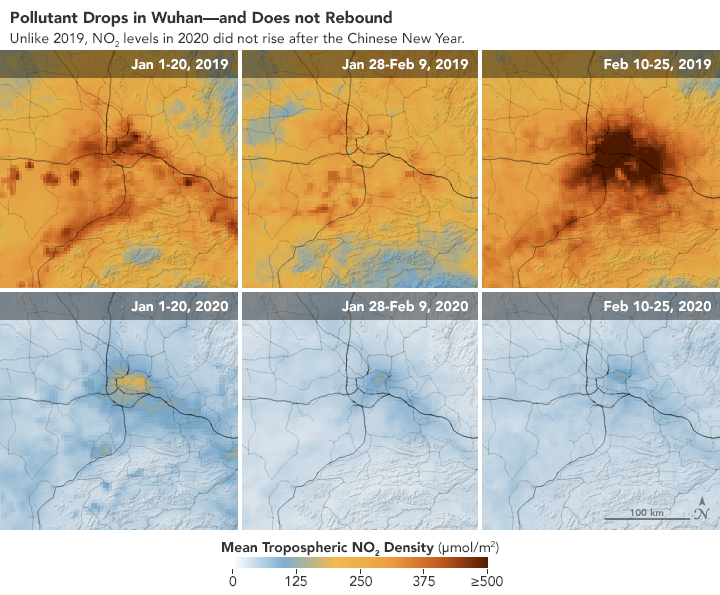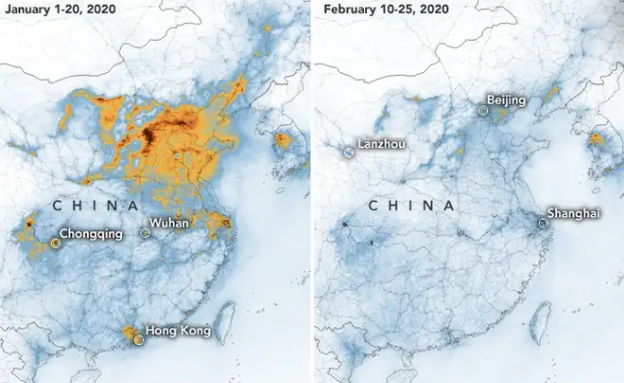Satellite images over China show a dramatic reduction in pollution after the coronavirus outbreak shut down large portions of the country’s industry and travel.
According to Nasa, the change was at least partly related to the economic slowdown caused by efforts to contain the virus.
Closing industrial plants and urging people to stay home has led to sharp drops in the burning of fossil fuels, which is the world’s largest greenhouse gas producer. In mid-February, scientists observed that the coronavirus put a stop to at least a quarter of China’s greenhouse gas emissions in just two weeks.
RELATED STORY:
Nasa maps show how levels of the toxic gas nitrogen dioxide – from vehicles, power plants, and factories – plummeted after the mass quarantine, compared to what they previously were.

RELATED STORY:
The outbreak began in China, where there are more than 80,000 cases of coronavirus, by far the most significant number of any country, with a little over 2,900 deaths.
Maps from Nasa compare pollution levels between the first three weeks of the year and 10-25 February.
Nasa scientists said the drop in pollution was first visible near Wuhan, the source of the outbreak, but ultimately spread across the country.
Fei Liu, an air quality researcher at Nasa’s Goddard Space Flight Center, said she had seen a decline in nitrogen dioxide levels during the economic recession of 2008 but said that decrease was more gradual, adding:
“This is the first time I have seen such a dramatic drop-off over such a wide area for a specific event.”












